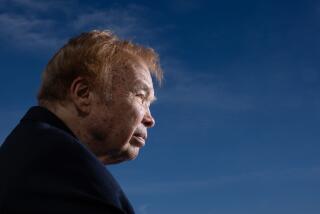Cholera Bacteria Causes Diarrhea, Dehydration
Cholera, the illness that has afflicted at least six passengers on a flight from South America to Los Angeles, is a potentially life-threatening diarrheal disease. It is usually spread by water contaminated by the Vibrio cholerae bacteria.
So far, public health officials have confirmed six cholera cases, including one death, on Aerolineas Argentina Flight 386, which flew to Los Angeles last Friday from Buenos Aires via Lima, Peru. At least 25 passengers are showing symptoms.
Health officials are investigating the possibility that water or food served on the flight was contaminated.
Such contamination is more likely to have taken place in Peru than in Argentina. In 1991, for the first time in a century, a large cholera epidemic struck Latin American, and the hardest hit nation was Peru, where 300,000 cases were reported. Argentina had not experienced a cholera epidemic as of the end of 1991, according to World Health Organization statistics.
Water supplies can be contaminated with cholera in regions where human waste is not disposed of in a hygienic fashion and where drinking water is inadequately purified. The disease can also be spread in contaminated foods, such as raw or undercooked shellfish or fresh vegetables that have been rinsed with water containing the bacteria
The cholera bacteria produces a toxin that causes diarrhea by sticking to the inside of the intestine and stimulating the release of salts and fluid. Some people who are exposed to cholera do not become ill or have very mild symptoms. But others become severely ill with profuse watery diarrhea as well as vomiting.
More than a quart of fluid may be lost in an hour. The very young and very old are at the greatest risk.
In the most extreme cases, a healthy adult can, if untreated, die from overwhelming dehydration within four to six hours of the onset of symptoms. In such cases, it is more typical for death to follow 18 or more hours after symptoms begin.
Treatment consists of rapid and complete replenishment of the fluid losses. Oral rehydration fluids containing rice or sugar usually suffice, with intravenous fluids reserved for the most severe cases. If a victim has gone into shock or becomes unconscious, therapy may be too little, too late.
Antibiotics can shorten the duration of diarrhea but are not the mainstay of therapy.
The time between exposure to cholera and symptoms may range from 12 hours to a week. The cholera bacteria can reproduce rapidly in the intestine.
More to Read
Sign up for Essential California
The most important California stories and recommendations in your inbox every morning.
You may occasionally receive promotional content from the Los Angeles Times.






